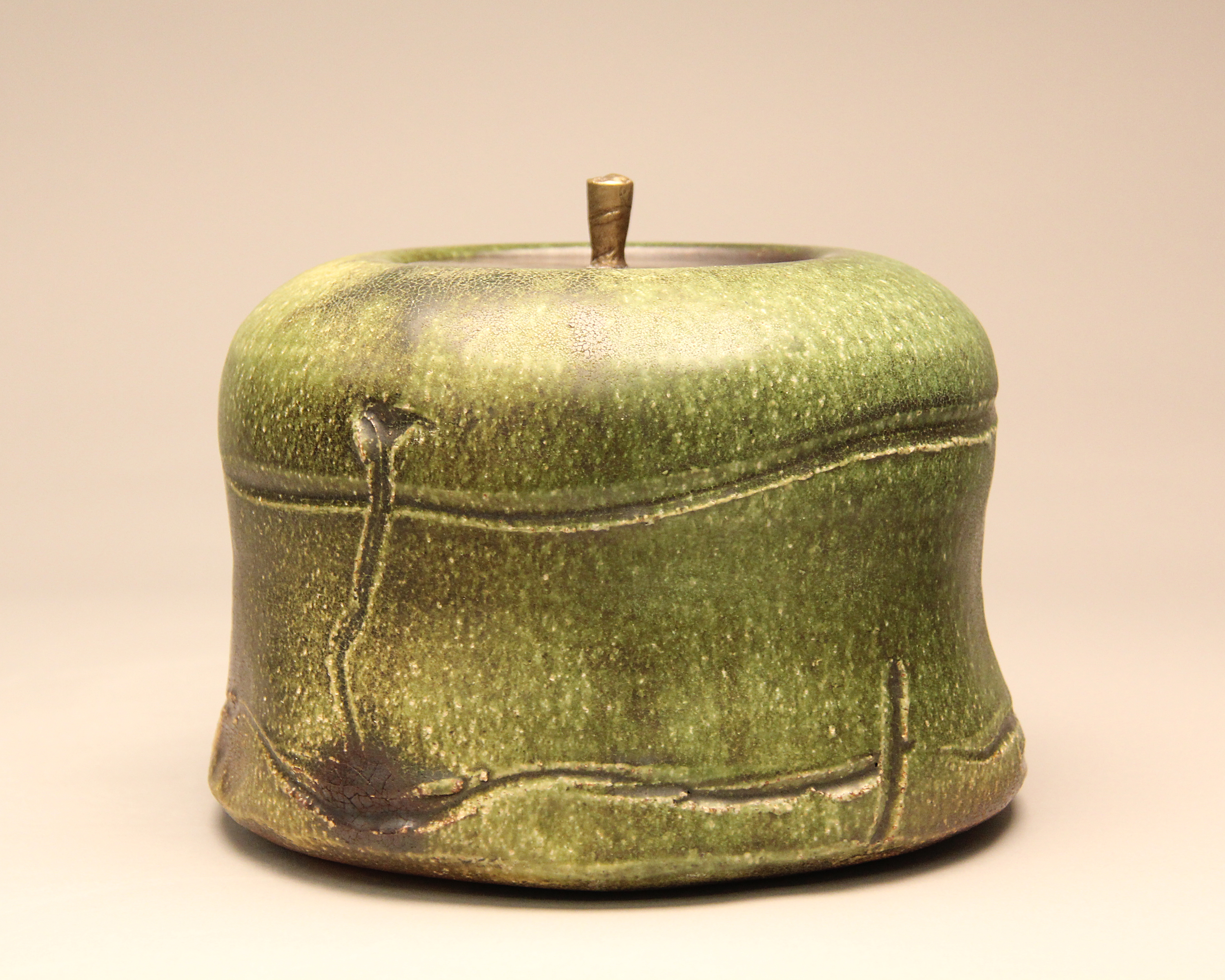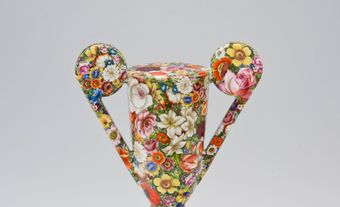Robert (Bob) Archambeau, artist, potter, teacher (born 18 April 1933 in Toledo, OH). Robert Archambeau has been an influential artist and teacher in the Prairie pottery scene for over 40 years. He is best known for his wood-fired stoneware vessels — jars, vases, teapots, and bowls — in which he masterfully synthesizes Asian ceramic techniques and philosophy with elements inspired by the Canadian Shield and the indigenous flora near his remote home in Bissett, Manitoba. In 2003, he was awarded the Governor General’s Award in Visual and Media Arts. The National Council on Education for the Ceramic Arts (NCECA) bestowed a lifetime achievement award upon him in 2008. His work is held in numerous collections, including the Winnipeg Art Gallery, the Gardiner Museum in Toronto and the Canadian Museum of Civilization in Gatineau, QC.
Early Life, Education and Career
Archambeau grew up in Toledo, Ohio, dropping out of high school at age 17 to join the US Marines. In 1954, he entered the University of Toledo, where he studied biology, ceramics, drawing and printmaking, skills that he continues to employ in his artistic practice. He attained a BFA at Bowling Green State University in 1959 and an MFA at the New York State College of Ceramics at Alfred University in 1964.
After teaching for four years at the Rhode Island School of Design, Archambeau moved to Winnipeg in 1968, joining the faculty of the University of Manitoba’s School of Art. He taught there for 23 years, influencing many students who established their own successful practices, including Grace Nickel, Kathryne Koop and Alex Yeung. Archambeau retired from teaching in 1991 and is currently Professor Emeritus of Art at the University of Manitoba.
Mature Style
Archambeau’s aesthetic affinities are with Asian ceramics, having lived in Japan and worked with the artists Akio Takamori and Jun Kaneko, as well as visiting artisanal potteries in Japan, Korea and China in the 1980s. Now an octogenarian, he throws hefty pots on the wheel with great vigour, reflecting his own large size, and then fires them in a wood burning kiln at high temperatures to attain speckled and mottled bodies, glazed in atmospheric earth tones of golden and scarlet hues. The bronze lidded jar is a form that he returns to frequently and is one of his favourite objects for exploration. Archambeau rarely signs his ceramics, acknowledging the Japanese mingei philosophy that utilitarian pottery made by unknown craftsmen is the noblest art form.
Awards
Governor General’s Award in Visual and Media Arts (2003)
Lifetime Achievement Award,National Council on Education for the Ceramic Arts (2008)

 Share on Facebook
Share on Facebook Share on X
Share on X Share by Email
Share by Email Share on Google Classroom
Share on Google Classroom










